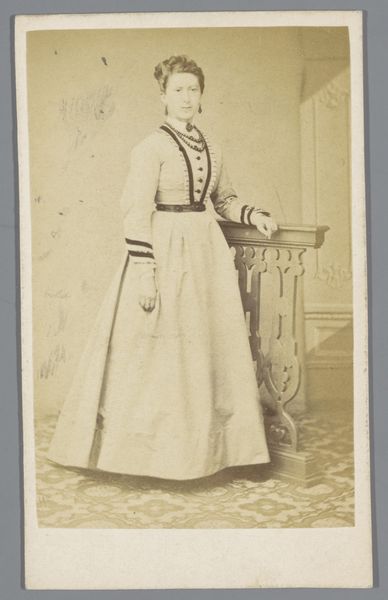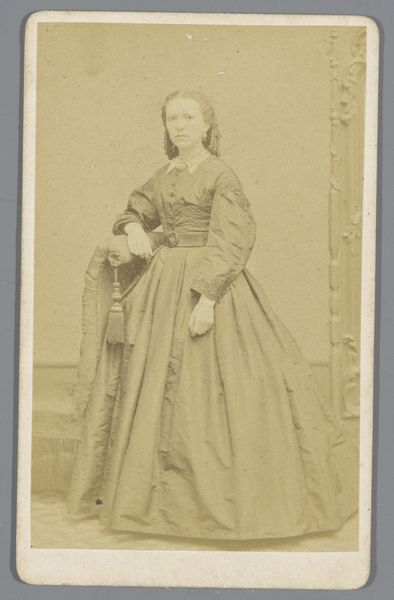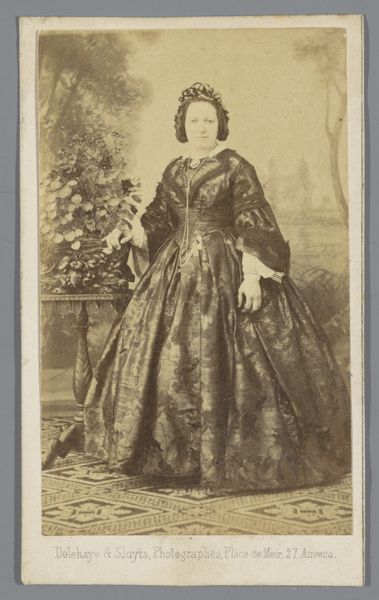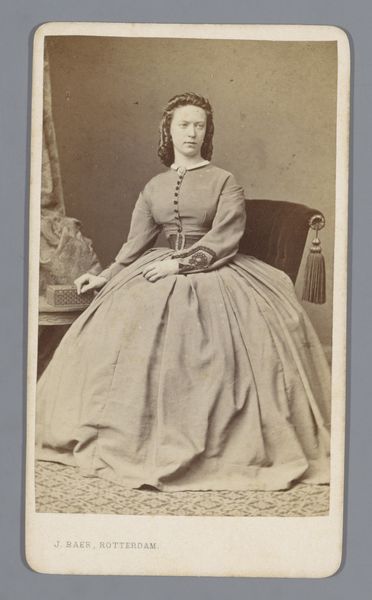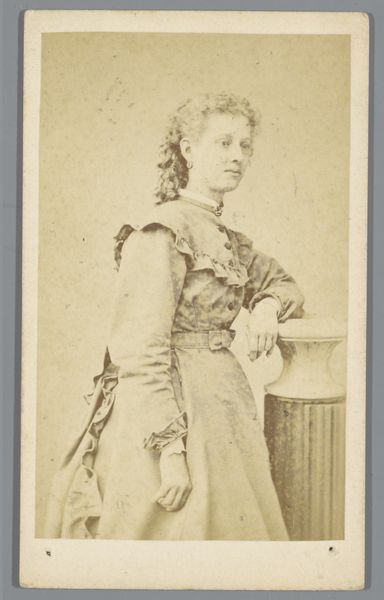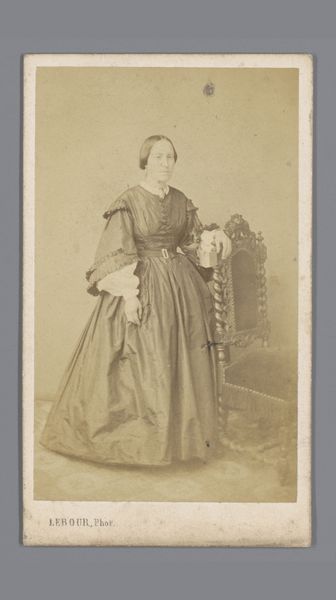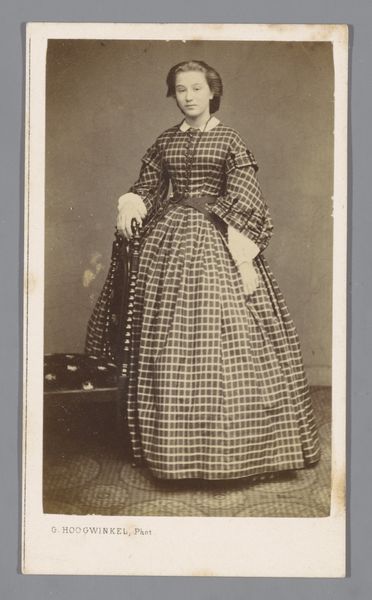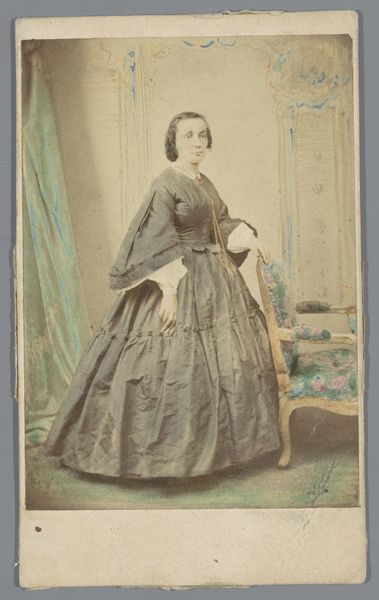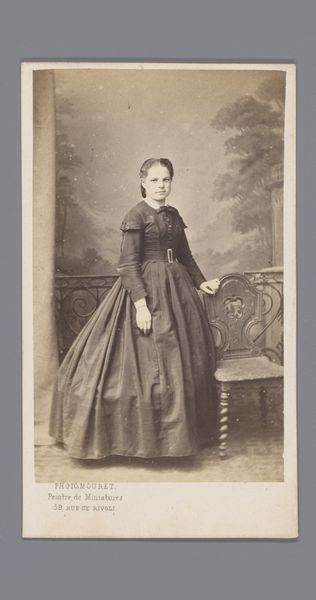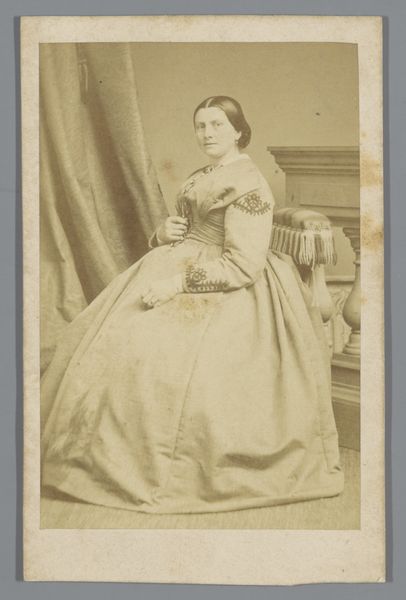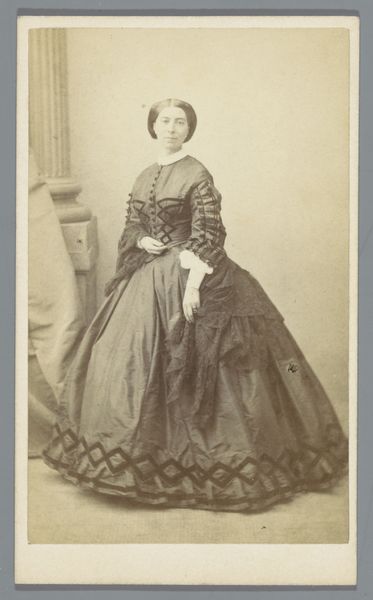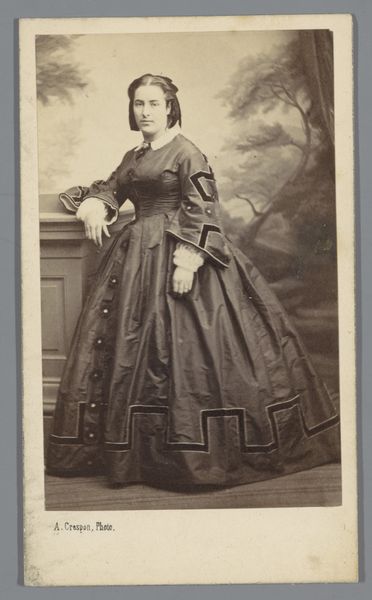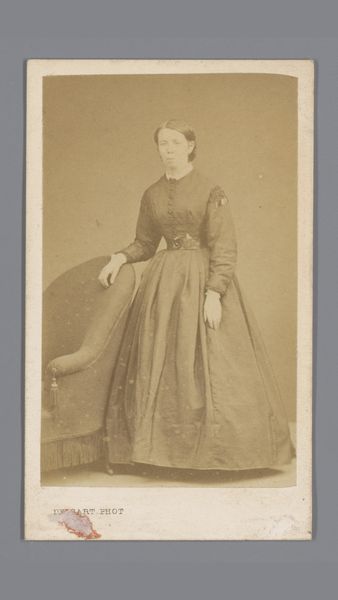
photography, albumen-print
#
portrait
#
wedding photograph
#
photography
#
historical fashion
#
framed image
#
genre-painting
#
albumen-print
Dimensions: height 101 mm, width 62 mm
Copyright: Rijks Museum: Open Domain
Editor: So, here we have "Portret van een onbekende vrouw," Portrait of an Unknown Woman, taken sometime between 1864 and 1869 by Jan Breebaard, using albumen print photography. There's something strikingly formal about the image, especially the subject's posture. How do you interpret this work? Curator: This portrait encapsulates the visual politics of 19th-century photography. Photography during this period served as a powerful tool for constructing and reinforcing social identities. Breebaard’s subject, despite being ‘unknown’ to us now, adheres to a rigid code of presentation. Note her elaborate dress, which would have signaled specific social status. What do you observe about her gaze, its direction and quality? Editor: It seems direct, almost challenging, but also a little sad, maybe? Curator: Exactly! Her gaze, though seemingly direct, may also betray the societal constraints placed upon women during this era. The act of sitting for a portrait, then, became both an affirmation and negotiation of social standing. Consider how the circulation of these images through family albums or public displays further cemented these visual hierarchies. It served a purpose not merely of memory but as a symbol. Editor: So, the photograph isn't just a representation, but also a performance of identity within those historical constraints. I guess I didn’t fully appreciate the political implications behind these seemingly simple portraits. Curator: Precisely. Recognizing these embedded socio-political dynamics encourages a more critical viewing of historical portraiture, revealing power structures inherent in representation itself. It allows us to question whose stories are being told and how they are being framed, then and now.
Comments
No comments
Be the first to comment and join the conversation on the ultimate creative platform.
